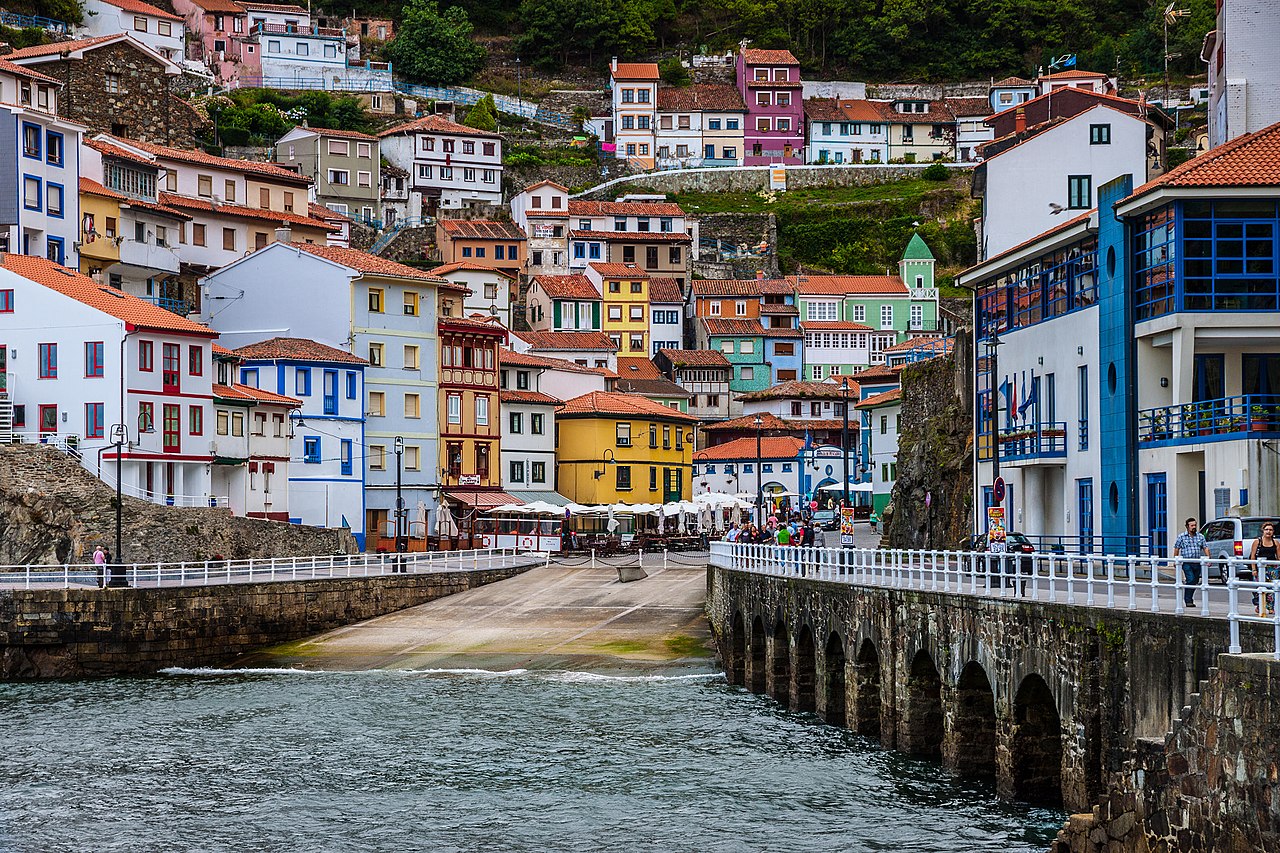
The towns of the Cantabrian coast share a rainy climate that gives them their characteristic natural frame of green tones. Also beaches of fine white sand bathed by a rough sea. And, likewise, the proximity of imposing mountains. But, above all, they have in common their enormous beauty.
We understand the Cantabrian coast as the one that goes from the Corporal Ortegal, in the province of La Corunaup to the border with France. It therefore includes the autonomous communities of Galicia, Asturias, Cantabria and the Basque Country. On the coast of all of them you have beautiful towns that we advise you to visit. To serve as a guide, we are going to recommend the most beautiful towns of the Cantabrian coast.
Nursery, starting with Galicia

Gate of Carlos V, in Vivero
We begin our tour of this town in the province of Lugo that belongs to the region of La Marina Occidental. Its municipal term extends from the foothills of the Sierra del Gistral to the Cantabrian Sea, which forms an estuary entering the town.
Although any time is good to visit Vivero, we advise you to do it in eastern. Because the festivities celebrated on that date are declared as International party of touristic interest. The Pilgrimage of Naseiro or the Rapa das Bestas de Candaoso also hold the status of festivals of tourist interest, but, in their case, national.
Vivero was an important town in the Middle Ages. It had a wall with six gates, of which only three remain: that of Carlos V, that of Vallado and that of Villa. The most spectacular is the first one, with the town's coat of arms and crowned by pinnacles. Inside, there is also a plateresque dressing room.
As for the religious heritage of Vivero, they highlight the Romanesque church of Santa Maria del Campo. And, next to her, the Concepción monastery, which shares architectural style. For its part, in the church and convent of San Francisco, you have a beautiful Renaissance altarpiece, same style that presents the Chapel of Mercy. Finally, already outside the village you have the monastery of Our Lady of Valdeflores, with its Gothic church, and the St. Peter's Church, which is Romanesque from the XNUMXth century.
Not less is the importance of the civil monuments of Vivero. In the Plaza Mayor you have the Town Hall building and others from the XNUMXth century. Also, in the center you will see a statue of the romantic poet Nicomedes Pastor Diaz, a native of the town. To the same XVII belongs the House of the Lions, a country house of which only its late Renaissance-style façade remains. And above is the mercy bridge, dating from the XV, although it has undergone numerous subsequent reforms.
Finally, if you want to get wonderful views of the Cantabrian coast and the island of Area, go up to the San Roque or Monte Faro viewpoints. And, to breathe fresh air, come to the Grove of the Retort, an imposing eucalyptus forest.
Ribadeo
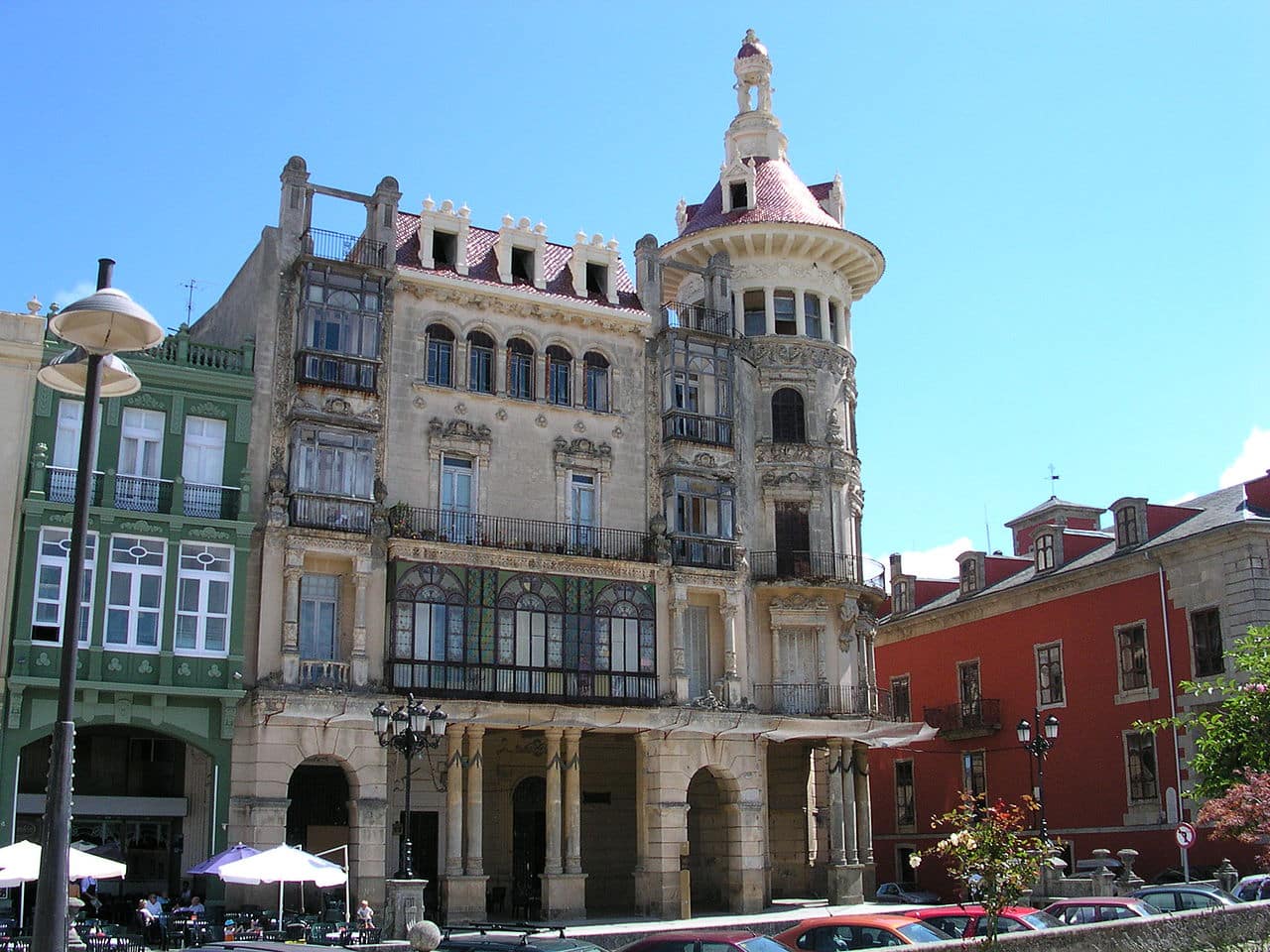
Torre de los Moreno, in Ribadeo, one of the most beautiful villages on the Cantabrian coast
We do not leave the province of Lugo to continue talking about beautiful towns on the Cantabrian coast. Because the stop in Ribadeo is mandatory. Not for nothing, the capital of the Eastern Mariña It is one of the most beautiful towns on the entire Galician coast.
Nestled on a hill at the entrance of the wonderful estuary of the Eo, its origins are also medieval. However, many of its monuments are due to the Indians who returned from America enriched. This is the case of the Moreno Tower, a modernist jewel from the beginning of the XNUMXth century that is located in the Plaza de España. However, you will find the largest number of these constructions, precisely, in the Indian neighborhood of San Roque.
But, in the same square you have other interesting monuments. Thus, the neoclassical mansion of the Ibáñez, convento of Santa Clara and Church of Santa Maria del Campo. Also, nearby you have the Old Customs, from the XNUMXth century and, on the outskirts, the remains of the San Damiano Castle, from the same century.
For its part, the watchtower chapel It is from the XNUMXth century and, if you visit it, you will also get a spectacular view of the Eo estuary. But, speaking of the surroundings of Ribadeo, we have to recommend the beach of the Cathedrals, famous throughout Spain. It receives this name due to the unique shapes made by the rocks that frame it, with arches reminiscent of the arcades of the great Gothic temples. But now we must continue our journey through the towns of the Cantabrian coast.
Cudillero
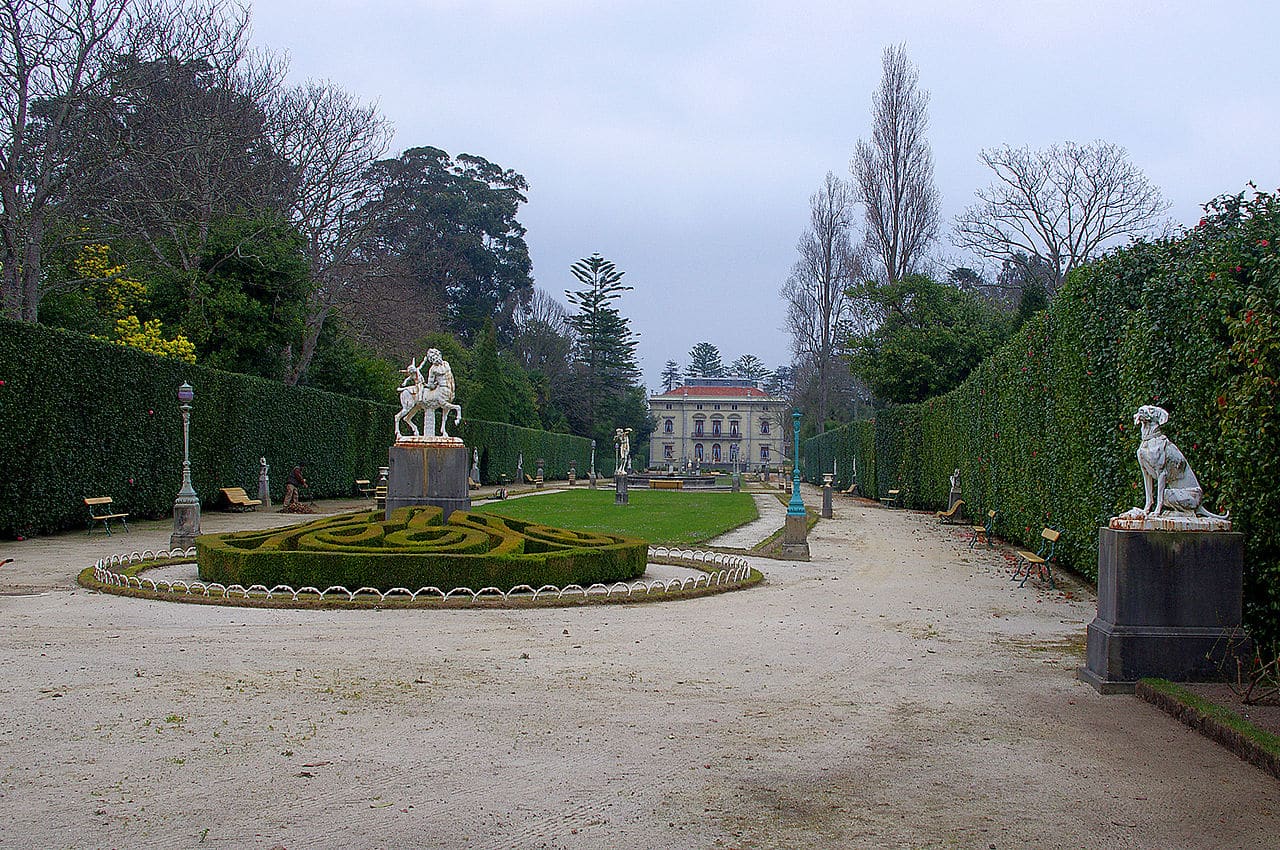
Gardens of the Quinta de los Selgas, in Cudillero
We now go to Asturias to tell you about another beautiful town known because, lying on a hill, it configures a spectacular amphitheater over the Bay of Biscay. In it you must visit the St. Peter's Church, Gothic, although from the XNUMXth century, and the Chapel of the Humilladero, which belongs to the same style. But more important is the church of Santa Maria de Soto de Luiña, located in this district of the municipality. It is baroque and forms, next to the rectory, an old hospital for pilgrims linked to the the Camino de Santiago.
However, the most important monument in Cudillero is the Fifth of Selgas. It is an impressive historicist mansion from the end of the XNUMXth century that includes an even more beautiful church and gardens. For these, it is known as "the Asturian Versailles" and has a magnificent museum inside. This includes pictures of Goya, el greco o Giordano, as well as tapestries, gold and porcelain.
Llanes, another wonder among the towns of the Cantabrian coast
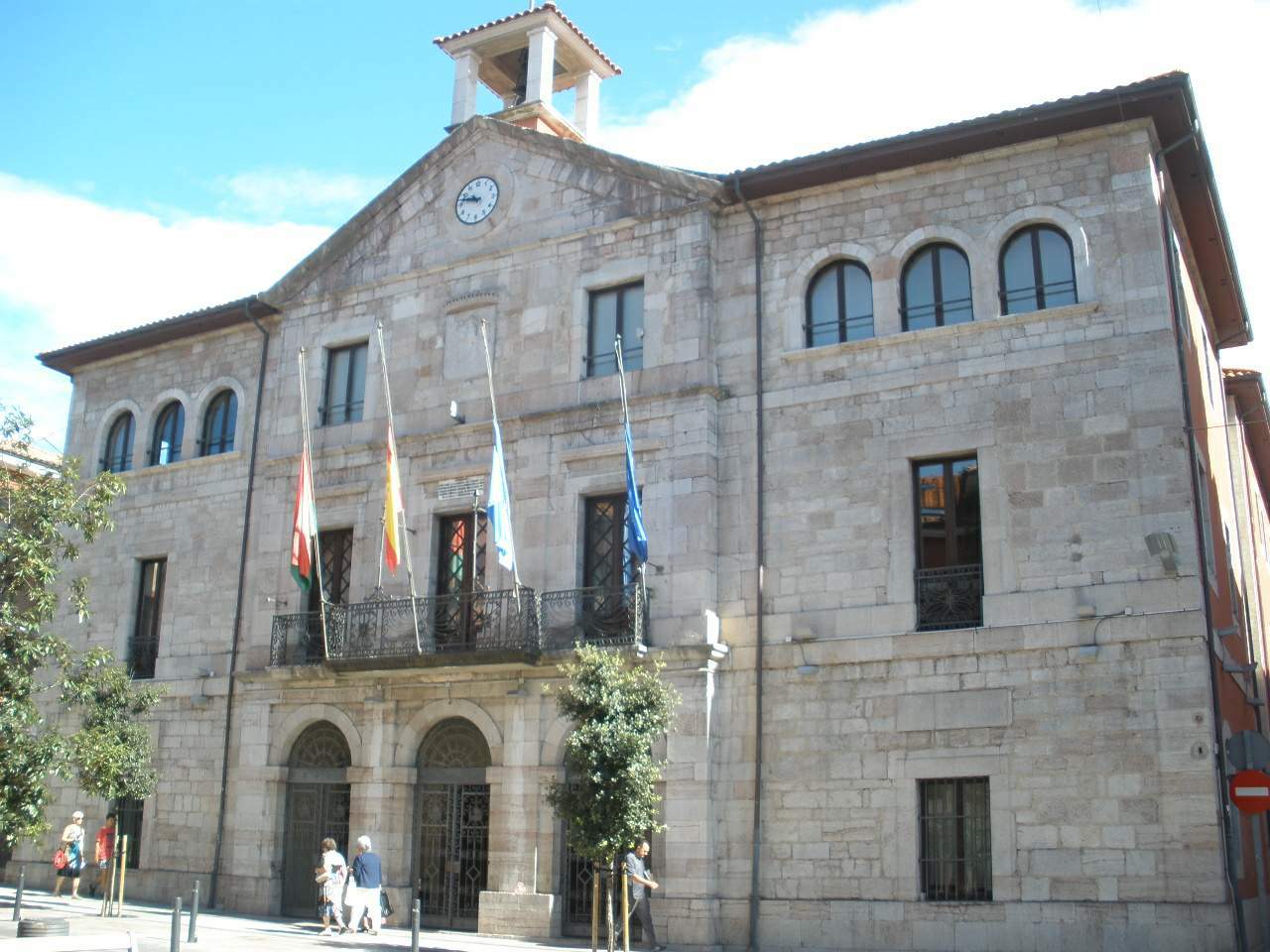
The Town Hall of Llanes
We are now going to the eastern end of the Asturian coast to tell you about the town of Llanes. We would have to dedicate an entire article to its monumental heritage, which is included within the Historic complex of the town of Llanes. But we will advise you to visit the wall and its four gates in this beautiful town.
Likewise, in terms of religious heritage, you have the Basilica of Saint Mary of the Assumption, Gothic in style, although it has two Romanesque portals. You should also see the old Convent of the Incarnation, which today is a hotel, and chapels such as those of Santa María Magdalena, San Roque or Santa Ana.
Even more spectacular is the set of civil monuments that you have in Llanes. To mention just a few, we will quote you the tower of the Posada, from the late medieval period, and the Palaces of the Count of la Vega del Sella and the Duke of Estrada, both baroque. But the town also has numerous examples of Indian and modernist architecture. They highlight in it the Palace of the Mendoza Cortina, Sinforiano Dosal mansion, House of the Lions and the building of the Casino.
Finally, don't forget to visit the wonderful surroundings of Llanes, with natural jewels such as the Gulpiyuri or San Antolín beaches y buffoons like those of Pría or those of Arenillas. This name is given to holes at the top of the cliffs through which the sea water shoots out.
San Vicente de la Barquera
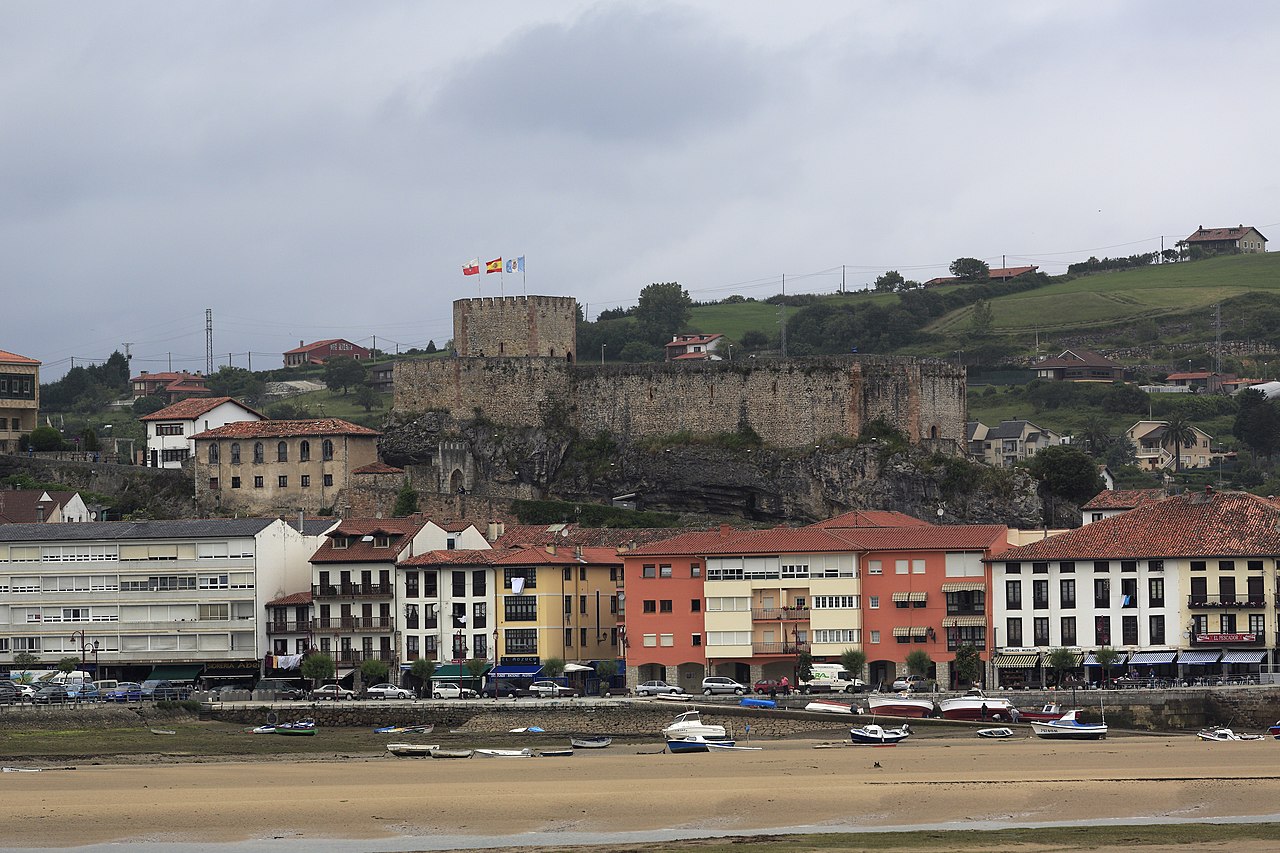
The King's Castle, in San Vicente de la Barquera
we arrived at Cantabria to show you one of its most beautiful coastal towns. It is the historic San Vicente de la Barquera, whose municipal district is included in the precious Oyambre Natural Park. Highlights in this town the Old Puebla or the historic center, where you can see the Proboste tower, the Casa del Corro or the Hospital de la Concepción.
Also noteworthy in the town is the Chapel of the Virgen de la Barquera, the Lazaretto de Abaño and the fort of Santa Cruz de Suaz. But, above all, you must visit the King's castle, built in the XNUMXth century, which dominates the town. And, next to it, the imposing Church of Santa Maria de los Angeles, built in the same century following the canons of the Gothic.
Also, next to the town, you have an impressive estuary at the entrance of its estuary, in turn fed by the Shield and Gandarilla rivers. Not to mention their beautiful beaches. Among these, those of the Maza, the Tostadero, Merón and Oyambre.
Bermeo
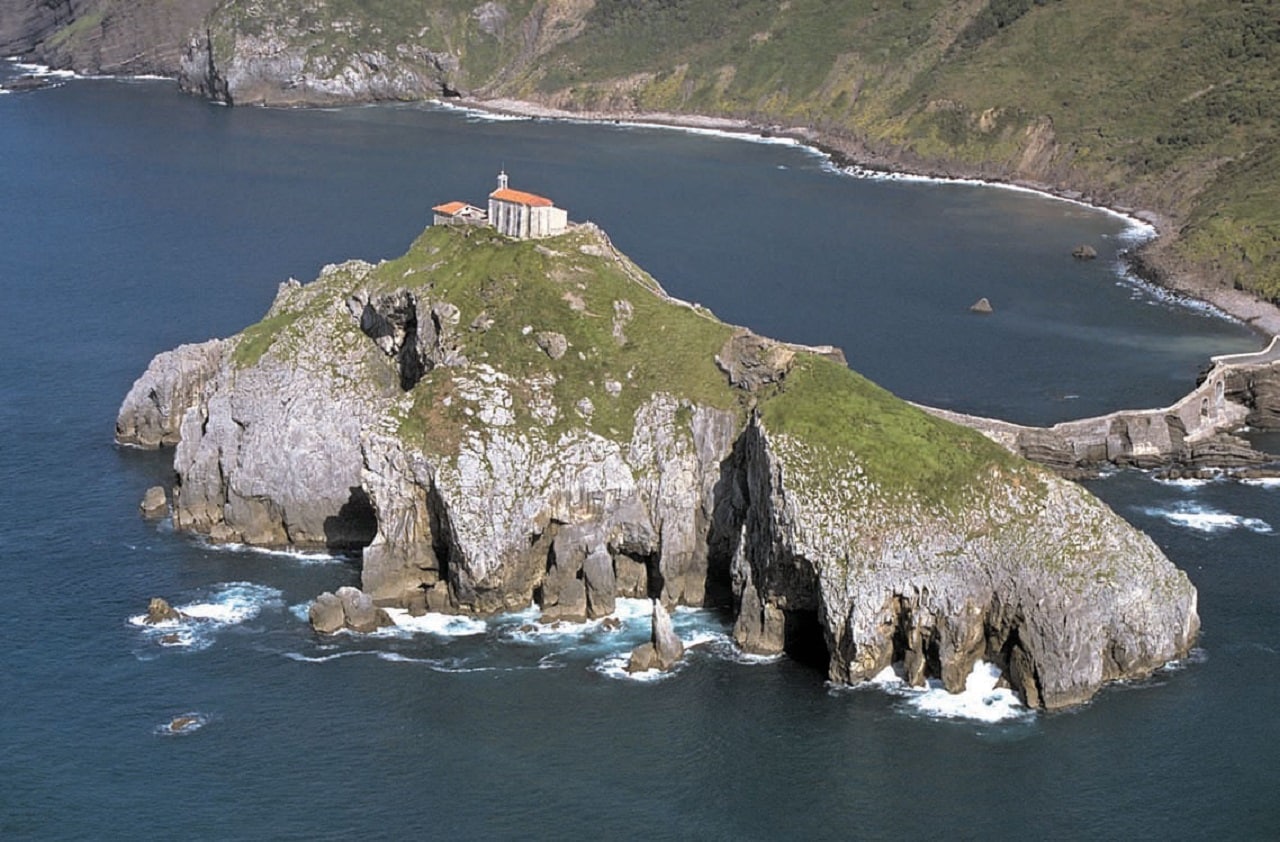
View of San Juan de Gaztelugache
We end our tour of the most beautiful villages on the Cantabrian coast in this old town with a seafaring tradition. Belongs to the Busturialdea region together with Gernica and Luno, in Biscay, and is included in the Urdaibai Biosphere Reserve.
Perhaps the best known natural wonder of Bermeo is Saint John of Gaztelugache, which belongs to its municipal term. It is a small islet with a XNUMXth-century hermitage connected to the land by a bridge. It forms a landscape as spectacular as it is mythical about which there are numerous legends. Among them, the one that says that the saint gives protection to fishermen. In fact, these, when they go out to fish with their boats, make several turns to port and starboard in front of the island to ask for it.
Not surprisingly, popular belief states that San Juan Bautista He landed in this place and left his footprints marked at various points on the rocks. It has even been the setting for television series as famous as Game of Thrones, in which he was Dragonstone. But Bermeo has more things to offer you, in addition to wonderful landscapes. Its historic center of fishermen's houses is very beautiful. It is accessed through the Saint John's Gate, vestige of the old walls. Also, you have the Church of Saint Eufemia, from the XNUMXth century, although its tower is Baroque and its neo-Gothic portico is from the XNUMXth century. Also those of Santa María de la Asunción, of the XIX, and that of the convent of San Francisco, Gothic from the XVI.
For its part, the Ercilla Tower It is a fifteenth-century fortification that houses the Fisherman's Museum. And the Casino it is a jewel of eclecticism built at the end of the XNUMXth century. Older is the building of the Town hall, since it was built in the XNUMXth century. Finally, the Kikumbera House It is a rationalist palace whose shape is reminiscent of a ship and in the port you have the recreation of an old whaler that you can also visit.
In conclusion, we have shown you some of the most beautiful towns of the Cantabrian coast. But we could add many others. For example, Luarca in Asturias, with its spectacular Fonte Baixa Gardens; Quotation marks in Cantabria, with its Capricho de Gaudí and its Palace of Sobrellano, or Hondarribia in Guipúzcoa, with its monumental old town. Go ahead and visit them and tell us how much you liked them.